Key takeaways
- Understanding the hierarchy of Facebook Ads (Campaign, Ad Set, Ad) is crucial for effective budgeting and targeting.
- Key metrics like CTR, CPC, and ROAS guide campaign optimization; balancing frequency is essential to maintain audience engagement.
- Narrowing audience and engaging in A/B testing can significantly enhance ad performance and reduce wasted spend.
- Continuous monitoring and adjustment of budgets based on real-time data is vital for campaign success and efficiency.
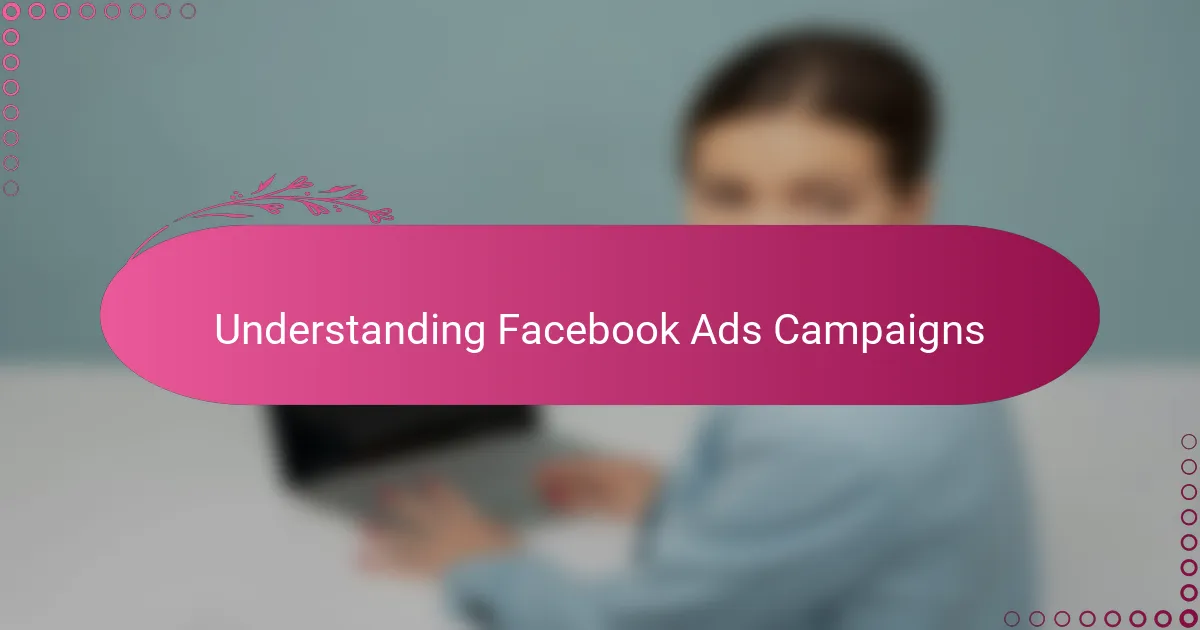
Understanding Facebook Ads Campaigns
Facebook Ads campaigns initially felt like a maze to me—so many objectives, placements, and audience choices. But I realized that grasping the framework behind these elements was key to making sense of it all. Have you ever wondered why some ads just seem to click with your audience while others fall flat? Understanding how campaign structure influences reach and engagement changed the game for me.
One thing I learned from experience is that Facebook organizes campaigns in three layers: Campaign, Ad Set, and Ad. Each plays a distinct role; the campaign sets the overall goal, ad sets target specific groups and decide budgets, while ads carry the creative message. This hierarchy helped me streamline my efforts and avoid spreading my budget too thin across irrelevant audiences.
I also found that knowing your objective—whether it’s brand awareness, conversions, or lead generation—shapes how Facebook delivers your ads. In the beginning, I often skipped this step and saw disappointing results. It made me rethink strategies and approach each campaign with a clear purpose, which honestly felt like unlocking a secret code in Facebook advertising.
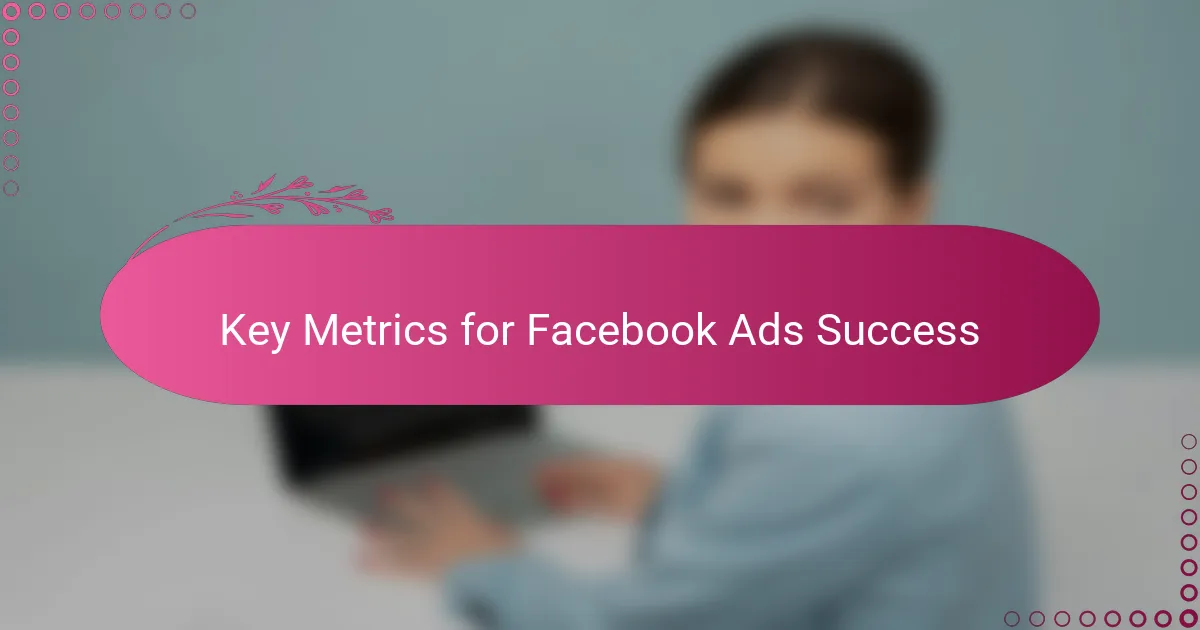
Key Metrics for Facebook Ads Success
When I first dived into Facebook Ads, I was overwhelmed by the flood of numbers popping up on my dashboard. But I quickly learned that not all metrics deserve equal attention. Focusing on key indicators like CTR (click-through rate), CPC (cost per click), and ROAS (return on ad spend) helped me see where my campaigns truly succeeded or stumbled.
Have you ever wondered why some ads bring steady sales while others barely get noticed? For me, tracking engagement metrics alongside conversion rates was a game-changer. It wasn’t just about clicks; it was about understanding how those clicks translated into actual customer actions. Missing this connection meant wasting budget on ads that looked good but didn’t perform.
One metric that surprised me was frequency—the average times a person sees your ad. Too high, and your audience grows irritated; too low, and they may never remember you. Balancing this taught me the art of timing and persistence, which I think is as much about psychology as it is about numbers.
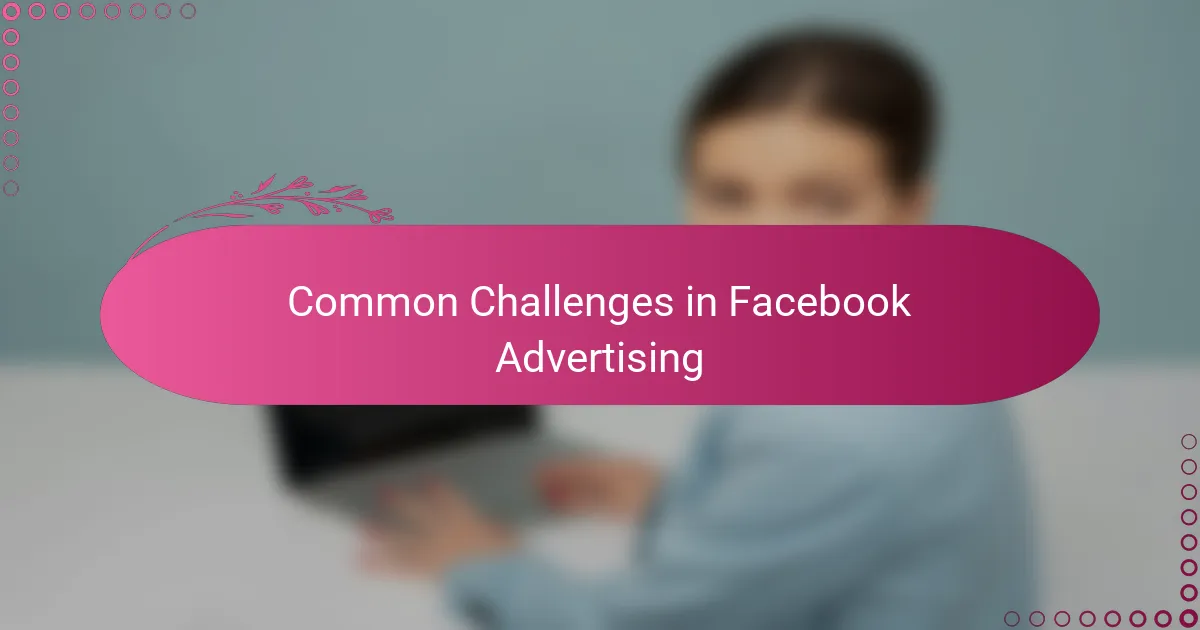
Common Challenges in Facebook Advertising
Sometimes, I found myself frustrated when my carefully crafted ads didn’t reach the right people. Facebook’s vast audience targeting options can be a blessing but also a curse—choosing the wrong audience led to wasted budget and poor engagement. Have you ever poured hours into setting up a campaign only to see dismal results because the targeting missed the mark?
Another challenge that caught me off guard was ad fatigue. After running the same creative for a while, my click-through rates just plummeted. It felt like no matter how good the ad was, people simply stopped noticing it. Recognizing when to refresh creatives became a crucial step to keep the momentum alive.
Budget allocation also tested my patience. Deciding how much to spend on each ad set without overspending or underfunding required constant tweaking. Early on, I learned that small adjustments based on real-time feedback often made the difference between a campaign that sputtered and one that soared. Have you experienced that tightrope walk between investing enough to see results and not burning through your budget too fast?
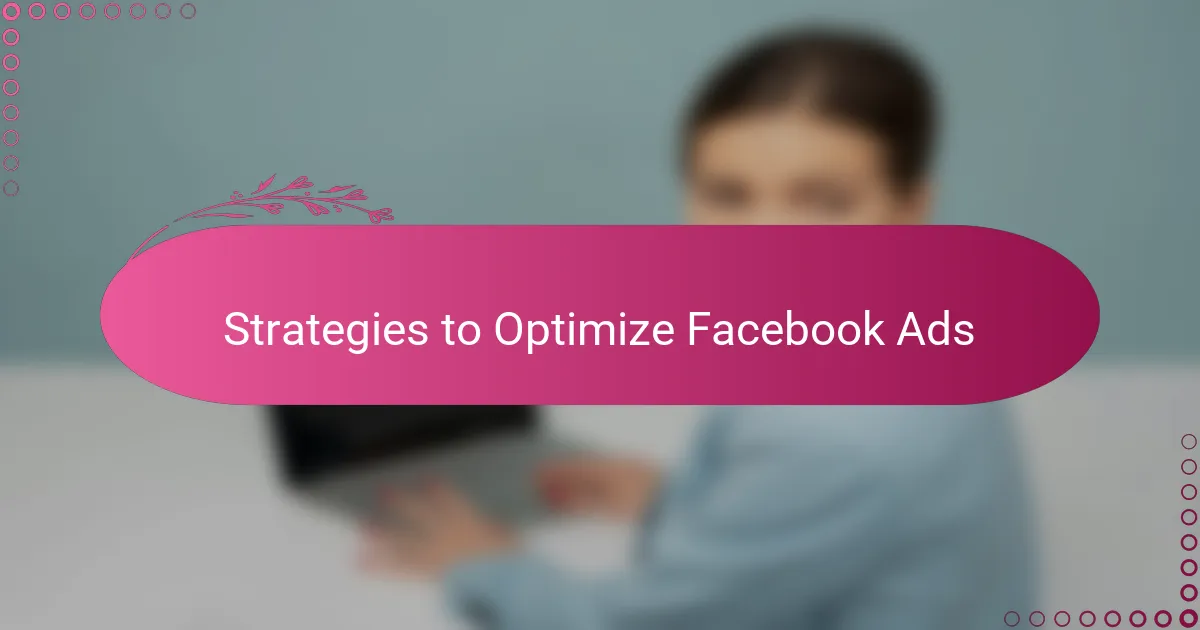
Strategies to Optimize Facebook Ads
One strategy that changed how I approached Facebook Ads was narrowing down my audience with precision. Instead of casting a wide net, I started creating custom and lookalike audiences based on existing customer data. Have you ever noticed how tailoring your audience feels like speaking directly to someone’s needs? For me, this shift boosted engagement and cut wasted spend dramatically.
Another technique I swear by is A/B testing different ad creatives and copies. Early on, I’d pick one design and hope for the best, but testing allowed me to discover what truly resonated. It felt like uncovering hidden insights about my audience’s preferences—sometimes a subtle headline tweak made all the difference in performance.
Budget optimization also taught me a valuable lesson. Rather than setting and forgetting, I began monitoring daily performance and shifting funds dynamically to the top-performing ad sets. It’s a bit like gardening—constantly tending to what’s growing and pruning what’s not. This active management kept my campaigns vibrant and efficient, and honestly, made me feel more in control.
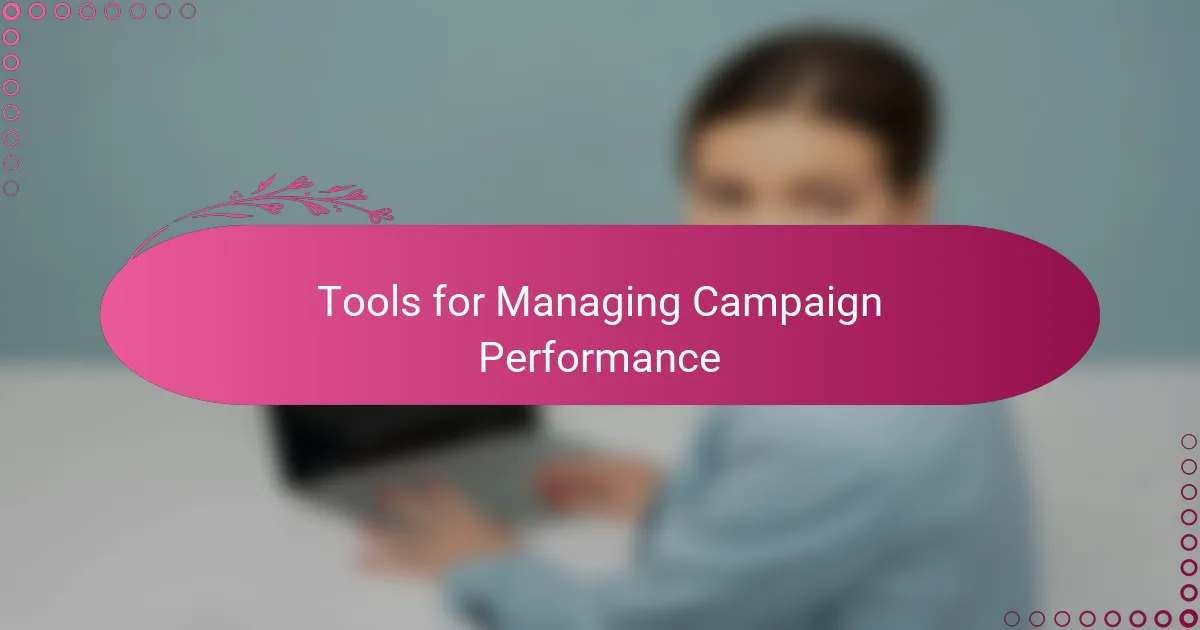
Tools for Managing Campaign Performance
Keeping track of all this might seem daunting, but that’s where tools like Facebook Ads Manager became my best friend. At first, I relied solely on the dashboard’s basic reports, but quickly realized I needed more detailed insights to spot trends and pivot strategies early. Have you ever missed a performance dip simply because you weren’t looking at the right data? Ads Manager’s customization options helped me avoid that pitfall.
Beyond Facebook’s native tool, I experimented with third-party platforms like Hootsuite and AdEspresso, which offered clearer visualizations and automated alerts. These tools saved me from endless spreadsheet scrolling and made decision-making more intuitive. I remember one campaign where real-time alerts caught a sudden drop in engagement, letting me adjust the budget before the losses piled up.
For those who value precision, integrating analytics with Google Data Studio was a revelation. Creating personalized dashboards that combined Facebook metrics with website behavior gave me a holistic view of campaign impact. It felt empowering to connect the dots between ad clicks and actual conversions, turning data into actionable steps rather than just numbers floating on a screen.
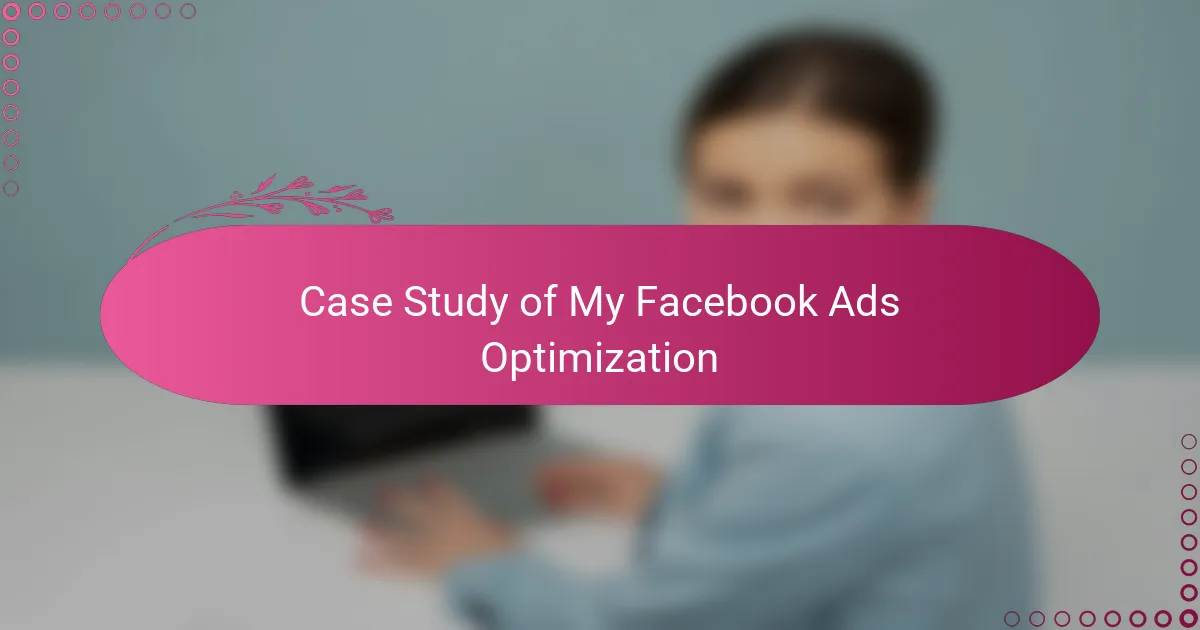
Case Study of My Facebook Ads Optimization
When I first tackled optimizing my Facebook Ads campaigns, one moment stands out vividly: I noticed an ad performing decently but not quite hitting the mark. Curious, I dug into the data and realized that my audience was too broad, causing my budget to scatter instead of focusing on the people who actually mattered. Narrowing down my audience to a specific segment felt like turning on a spotlight in a dark room—it instantly brought clarity and better engagement.
Another lesson came from my experiments with creative testing. I remember running two nearly identical ads, differing by just a single phrase in the headline. To my surprise, that small tweak doubled the click-through rate. It made me appreciate how even tiny changes can ripple into significant results. Have you ever underestimated the power of fine-tuning your message? That experience taught me to always test and never assume what works.
Finally, there was the challenge of pacing my budget wisely. Early on, I spent too quickly, only to watch promising ads stop delivering halfway through the campaign. Learning to monitor daily performance and reallocate funds felt like steering a ship—I had to adjust constantly to keep things on course. This hands-on approach brought a sense of control and, frankly, relief knowing I wasn’t just tossing money into the void.
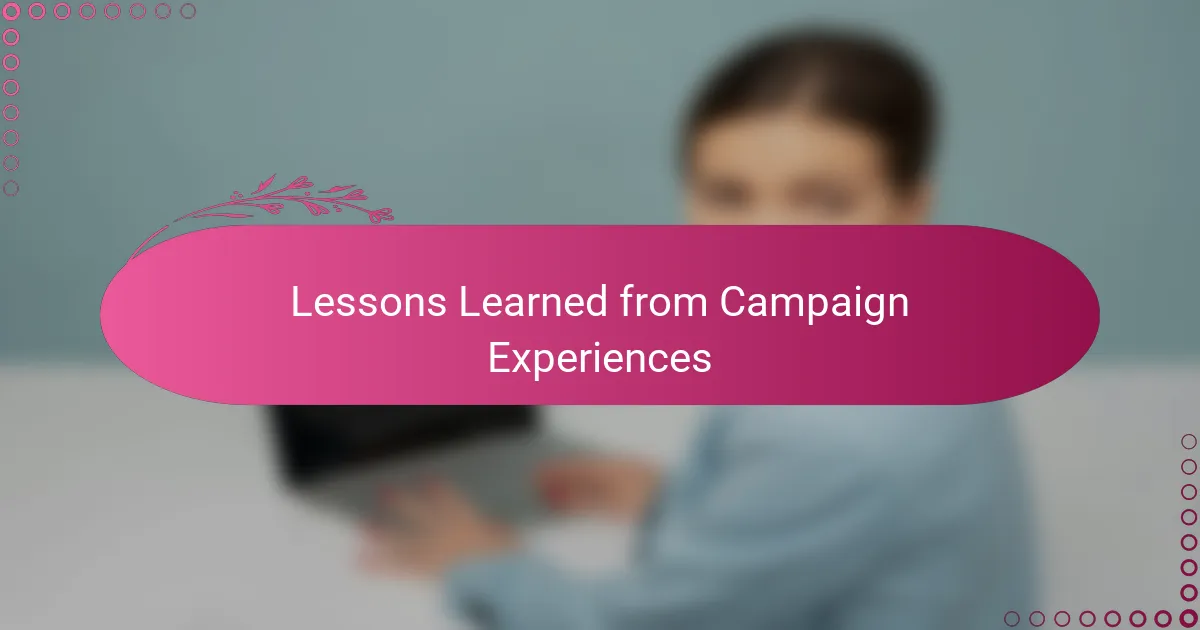
Lessons Learned from Campaign Experiences
Reflecting on my campaigns, one clear lesson was the importance of patience. It’s tempting to expect instant wins, but Facebook’s learning phase requires time to gather data. Have you ever felt frustrated watching your ads sit in limbo? Waiting through that phase taught me to trust the process rather than constantly tweaking every detail.
I also learned to listen closely to what the data was really saying, not just what I hoped it would say. Early on, I found myself sticking with ads that performed “okay” because I liked the creative or message. It was a tough but valuable moment to pause and cut losses decisively. Sometimes letting go feels like failure, but in reality, it’s making room for better opportunities.
Another big takeaway was the power of small, consistent improvements. I didn’t see overnight miracles, but gradually refining targeting, creative, and budgets created real momentum. Have you noticed how those little adjustments add up? That steady evolution gave me confidence that optimization isn’t a one-time fix—it’s an ongoing journey.